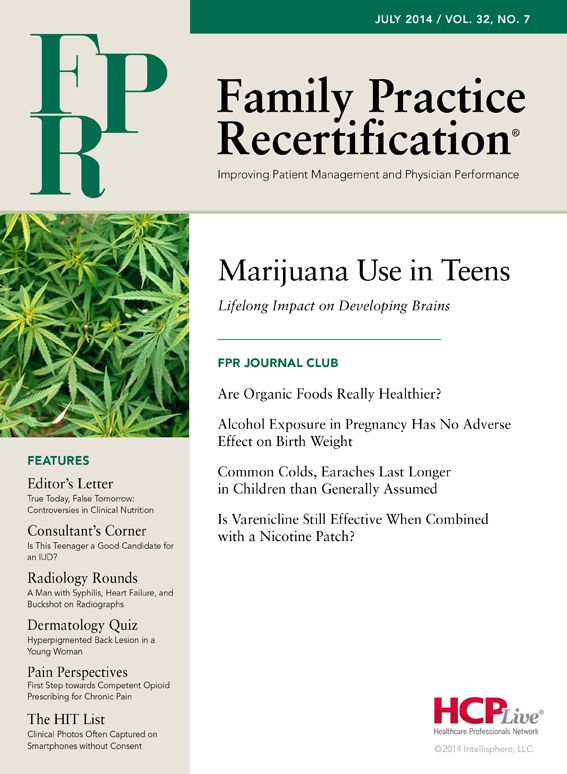Is Varenicline Still Effective When Combined with a Nicotine Patch?
For those who fail to quit smoking with varenicline treatment alone, adding a nicotine patch will likely increase the odds of tobacco abstinence at 6 months.
Frank J. Domino, MD
Review
Koegelenberg CF, et al. Efficacy of varenicline combined with nicotine replacement therapy vs varenicline alone for smoking cessation: a randomized clinical trial. JAMA. 2014 Jul; 312(2):155-61. http://www.ncbi.nlm.nih.gov/pubmed/25005652.
In this randomized controlled trial (RCT), 446 generally healthy adults who smoked at least half of one pack of cigarettes a day were randomized to receive varenicline with either a 15 mg nicotine patch or a placebo patch for smoking cessation.
Results and Outcomes
The patients who received varenicline with nicotine replacement therapy (NRT) achieved higher continual abstinence rates at 12 weeks, 24 weeks, and 6 months than those who received varenicline with placebo. At the 6-month mark, 65% of the patients in the combined treatment group remained abstinent, compared to 47% in the varenicline plus placebo group.
The most common adverse effect in the study was nausea, which occurred in more than half of the patients in both groups with no statistically significantly differences. Sleep disturbance and dreams were also common in both groups, but again did not reach statistical significance between the 2 arms. In fact, the only significant difference occurred in skin reactions, which were slightly more common in the combined treatment group and likely related to the active nicotine patch.
During the treatment phase of the study, 2 women who received varenicline with a placebo patch group became pregnant. One pregnancy was spontaneously miscarried, which was deemed unrelated to the drug study, while the other resulted in the birth of an infant with Down syndrome, though there is no known or reported risk for the genetic condition with the use of varenicline.
Conclusion
For those who fail to quit smoking with varenicline treatment alone, adding NRT in the form of a nicotine patch will likely increase the odds of tobacco abstinence at 6 months.
Commentary
Helping patients quit smoking is possibly the single most beneficial action family physicians can facilitate. Strong systematic review data has long supported varenicline as the most effective treatment method for smoking cessation, but combining it with NRT does not necessarily make intuitive sense. However, 65% of the patients who received that combined treatment in this RCT remained abstinent from tobacco use after 6 months.
Concerning the side effect profile of varenicline plus NRT, the worrisome risks were not different between the treatment groups. The presence of one case of Down syndrome in the varenicline plus placebo group was concerning, but this correlation was not reported in any prior literature. Although the current RCT was not powered adequately to determine cause and effect, the overall risks for the combined treatment were very reassuring.
Combining varenicline with NRT seems to be a reasonable approach for those who have failed varenicline alone or simply wish to have the highest chance of success with smoking cessation. However, physicians should encourage female patients considering varenicline to use a contraceptive agent to lower the risk of pregnancy during treatment, though such discussion is aimed to lower legal risk, rather than prevent any statistically known adverse outcomes.
About the Author
Frank J. Domino, MD, is Professor and Pre-Doctoral Education Director for the Department of Family Medicine and Community Health at the University of Massachusetts Medical School in Worcester, MA. Domino is Editor-in-Chief of the 5-Minute Clinical Consult series (Lippincott Williams & Wilkins). Additionally, he is Co-Author and Editor of the Epocrates LAB database, and author and editor to the MedPearls smartphone app. He presents nationally for the American Academy of Family Medicine and serves as the Family Physician Representative to the Harvard Medical School’s Continuing Education Committee.
